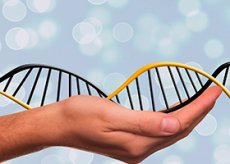New publications
Similar gene activity unites different mental disorders
Last reviewed: 02.07.2025

All iLive content is medically reviewed or fact checked to ensure as much factual accuracy as possible.
We have strict sourcing guidelines and only link to reputable media sites, academic research institutions and, whenever possible, medically peer reviewed studies. Note that the numbers in parentheses ([1], [2], etc.) are clickable links to these studies.
If you feel that any of our content is inaccurate, out-of-date, or otherwise questionable, please select it and press Ctrl + Enter.

A similar genetic pattern has been found in several mental disorders: depression, autism, manic-depressive psychosis and schizophrenia.
In patients suffering from psychoneurological problems, the function of the brain is impaired - first of all, there are changes at the level of nerve cells, as well as at the molecular level.
However, cellular and molecular disorders do not appear out of nowhere. For example, one of the genes stops working, or, on the contrary, works too actively. As a result, very strong synapses are formed in the nerve cell, or, on the contrary, weakened ones - this has a direct impact on the processes of perception, the emotional sphere and cognitive ability.
Scientists set out to determine the genetic changes that influence the development of individual mental pathologies. During the research, it became clear that such pathologies have much in common in terms of genetic picture.
How does this manifest itself? Hereditary information is first transferred from DNA to RNA. RNA molecules are synthesized, which subsequently produce protein molecules (the so-called transcription and translation). With adequate gene activity, a lot of RNA is produced, and with impaired activity, little.
Scientists from the University of California (Los Angeles) compared gene activity in seven hundred samples of the cerebral cortex isolated from patients who suffered from such pathologies as autism, schizophrenia, manic-depressive psychosis, depressive states and alcoholism. In addition, samples taken from healthy individuals were also examined.
Gene activity was assessed by RNA. It turned out that the above-mentioned diseases have much in common. Similarities in gene function were found in schizophrenia and manic-depressive psychosis, in schizophrenia and autism. Common changes were related to genes that control the excitation of nerve cells, as well as their ability to create and transmit electrochemical impulses.
But: each pathology has its own characteristics that allow us to distinguish diseases in practice. Paradoxically, with a similar genetic picture, completely different clinical signs arise.
By the way, gene activity in alcoholism was different and did not have the similarity mentioned above. The information obtained during the research will probably allow us to think about creating new effective methods of treating psychopathologies in the future. However, one question still remains unresolved: why are there such cardinal differences in the clinical manifestations of the listed diseases? Some experts suggest that it is necessary to continue research and evaluate gene activity not in the cortex as a whole, but in isolated groups of nerve cells, or even directly in the cells themselves. Perhaps, at a deeper level, there are some pronounced differences that lead to a discrepancy in the clinical picture.
An article about the research was published in Science.

 [
[